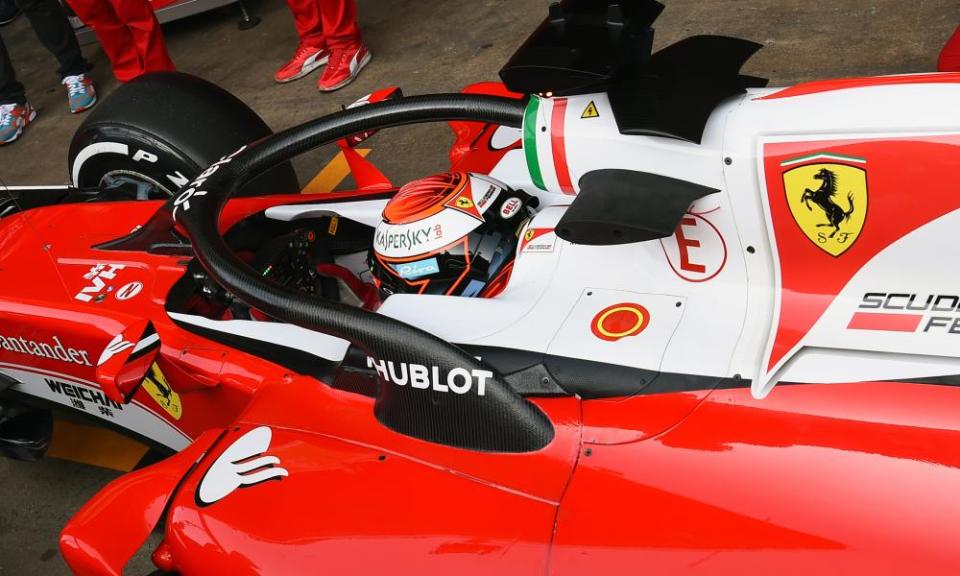Max Verstappen among drivers to speak out against halo cockpit safety system

Several Formula One drivers have spoken out strongly in opposition to the introduction of the halo cockpit protection system in the lead-up to the Hungarian Grand Prix this weekend.
The controversial safety device, which the FIA announced last week was to be mandatory for the 2018 season, has had a poor reception from fans and was understood to have been opposed at a recent strategy group meeting by nine of the 10 teams on the grid.
The halo is designed to protect drivers from impacts with other cars, flying debris and contact with trackside elements and has been subject to intensive research by the FIA which was outlined in Budapest.
Formula One fans, however, have been robust in their opposition to the device and Haas’s Kevin Magnussen, who agreed with their assessment, was scathing on aesthetic grounds. “It takes away some of the passion that F1 is talking about,” he said. “When you look at the car and it is ugly, F1 cars aren’t meant to be ugly. That is the reason that a Ferrari is more exciting than a Mazda. It is to do with passion. If it looks shit, it is shit.”
Equally damning was Max Verstappen, long an opponent of halo, who said Formula One needed to retain its edge. “There needs to be a certain element of risk,” the Red Bull driver said. “You can improve the car but we don’t need this thing on top of it. It’s not just the looks, I don’t think it is necessary.
“With the virtual safety car a lot of risks are taken out already, the wheel tethers are quite strong so it is not easy to lose a wheel. If there is a part flying off the car it is not going to protect you anyway.”
The Grand Prix Drivers’ Association had requested the FIA adopt some form of cockpit protection as swiftly as possible in 2016. In Budapest, however, Romain Grosjean, a GPDA director, was among those who opposed halo. “Personally I think it was a sad day for Formula One when it was announced and I am still against it,” he said. He questioned whether enough testing had been done to ensure it would not impair sight of flags or the starting lights and his criticism was echoed by Nico Hülkenberg and his team-mate Jolyon Palmer.
Lewis Hamilton, who had originally objected to the look of halo but supported it when FIA studies demonstrated it increased by 17% the chances of surviving an incident, still did not like its appearance but acknowledged the need for protection. “It definitely doesn’t look good; we know that,” the British driver said.
“I think we are moving towards a closed cockpit. The things that have happened with drivers being hit on the head, it is kind of crazy that today we are still vulnerable. Our head is the most precious part of our body; it is exposed. I definitely don’t argue against it.”
The FIA made it clear that the device could have made a difference in the deaths of Justin Wilson, who was killed by flying debris in 2015, and of Henry Surtees, who was killed during a Formula Two race having been struck by a wheel. Their findings have been presented to drivers and, although there has been opposition, both Sebastian Vettel and Fernando Alonso spoke out in favour of the device.
Charlie Whiting, the FIA race director, believed halo might yet look better once it was an integral part of the car. “I think fans will get used to it; there is a little bit of push back at the moment,” he said. “Teams haven’t explored the full range of possibilities to make them more pleasing to the eye.”

 Yahoo Sport
Yahoo Sport 





































